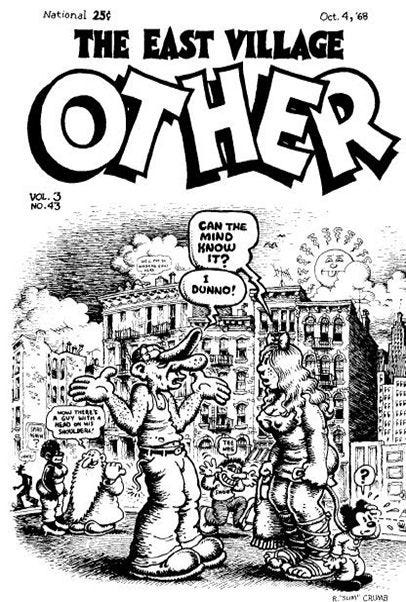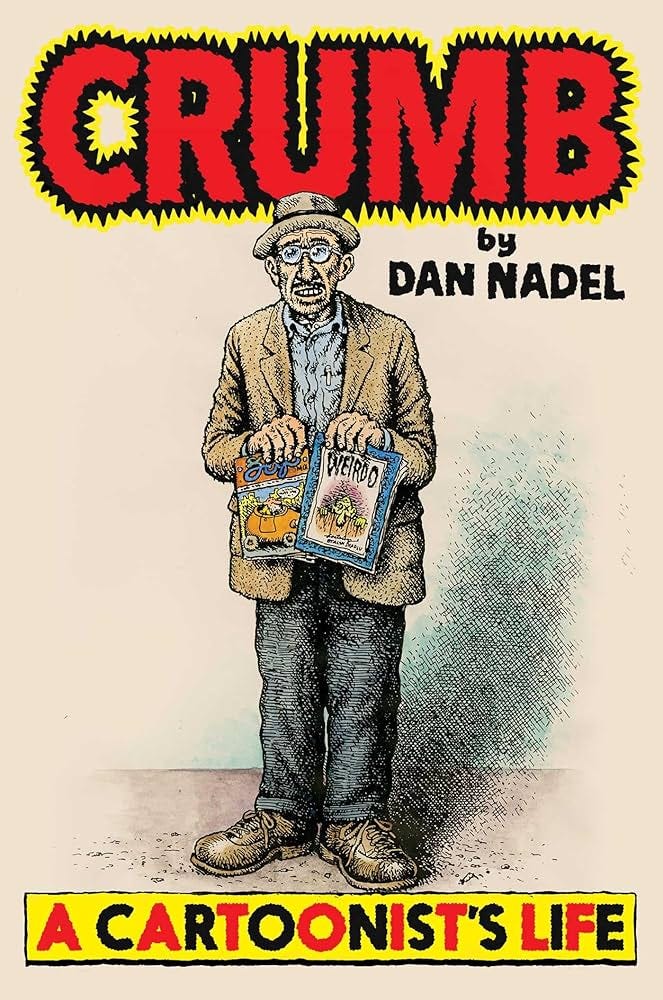So, I’m an idiot, an old, forgetful idiot who apparently still doesn’t know how to use a calendar. Yep, I blew the deadline for my print “72 Hours” column and filed it a week late. Because I’m an idiot. Why am I like this?
Anyhow, this will now appear in June’s edition. That said, I don’t want you to miss out on my golden prose, so I’ve copied the column below. Way down. You’re gonna have to scroll … There you go.
Did I tell you about my new art project, Tangible? I told the readers of the Frederick News-Post, who remained deafeningly ambivalent about it. As I explain there:
What is “Tangible”?
I don’t entirely know. I’ve called it an “analog sketchbook comic newsletter,” which is both accurate and entirely misleading. It’s not regular, it’s not curated and it’s not tidy — think strange drawings, occasional existential despair, one page about an astronaut floating in space trying to reach someone who can’t hear them. You know. Stuff.
Basically, Tangible is a way for me to stay sane and do something I find meaningful in a world in which it seems increasingly difficult to find meaning. Part of that is divesting myself of social media and the Sisyphean grind of Artist-As-Content-Creator.
Sign up for Tangible — i.e., give me your address — and I’ll mail you a copy occasionally as the muse takes me. You don’t have to pay for postage or any of that nonsense. You can even put it straight in the recycling if you want. All I want to do is reach out in a slow, old-fashioned, analog way and connect.
I’ll never post it online and I’m not reprinting each issue (if that’s even the right word for what this is). Once you sign up, you’ll get Tangible copies from that moment on.
Right now, I’m preparing No. 5, which will go out soon to a list of 10 addresses.
It seems weird to confess, but I have no expectations for this project. I may end it now. I may send these ‘til I die. While I put a lot of work into each zine/letter, the emotional stakes are low. Once it goes in the mailbox, the attachment ends.
Copies of Tangible that are sitting on my writing desk right now and will be posted out in the next few days. Yes, yes, it’s more Crumb stuff, among other old-man musings.
Am I doing art? Again, I have no idea. You decide.

“Can the mind know it?”
“I dunno.”
For some reason, as I was reading Dan Nadel’s Crumb biography, this cover stuck with me. The message is pure Zen koan. Can the mind know it?
Crumb: From icon to ick and why that’s not right
I've been down a bit of an R. Crumb rabbit hole recently after I learned that an appearance by the author of a new Crumb biography, Dan Nadel, was turned down by the Small Press Expo.
“Crumb: A Cartoonist's Life” is the first full biography detailing the life and times of the famously prickly and defiantly odd countercultural underground comic-book icon. Nadel's book has garnered significant accolades for its depth of research and detailed characterization of how Robert Crumb became “R. Crumb,” a man who — and this isn't hyperbole — created underground comics (more correctly, "comix") and — again, not hyperbole — helped shape the countercultural revolution of the 1960s.
Brooklyn resident Nadel is no shirker either. Published in April, his biography is a hefty 400-plus pages. Nadel is a writer deeply steeped in the guts of comics, the curator at large for the Lucas Museum of Narrative Art. "Crumb: A Cartoonist's Life" is his fourth book.
SPX is perhaps the premier annual event for those in the small press and independent comic scene, and holds a special place in my and this column's hearts as it's held in Bethesda, making it practically local.
Why, when part of the organization’s remit is to “educate the public and members of the comics field in the areas of comic history, current trends in the comics field, the impact of comics on popular culture and other analytical topics,” would SPX be so quick to shut the door on even discussing Crumb, whose work is so integral to the very industry for which SPX advocates?
"Too controversial," was the simple rebuttal.
"Like I wanted to do something in SPX and they said no," Nadel recalled during the April 15 episode of the "Comic Books Are Burning In Hell" podcast. " … I was willing just to go down, like I'll go promote the book at SPX. I'll write to them and see, write to Warren (Bernard, SPX's organizer) and see if I can give a talk. You know, I'll just drive down, stay at my parents, it’ll be fun."
A disbelieving chuckle enters Nadel’s voice at this point. The notion of a refusal is almost so ridiculous, it’s hard for him to compute.
“OK. All right. It's fine," Nadel said diplomatically. "It's not too controversial for like hundreds of thousands of people, but that's fine. But I thought that was very telling in a funny way, because it's just, there's a certain ‘Crumb-As-Boogeyman’ that’s stuck in a way. That is too bad, actually.”
This made my head spin. Is Crumb controversial? Yes, hugely. He always has been. His racist depictions of Black people and misogynistic portrayals of women live alongside, and are often subject to, Crumb's overtly sexual and graphic illustrations.
Crumb's work can be difficult to read. He himself has wondered out loud in interviews and on the page, at length, about the acceptability and transparency of his violent, graphic, drug-fueled stream-of-consciousness meanderings.
I’m not here to prosecute or explain the merits of Crumb’s work. It's fair to raise those questions — but to shut down that discussion entirely?
That's dangerous territory, folks. By all means, debate Crumb's work, but don't cancel him entirely, don't try to pretend he doesn't exist, and don't deny his influence.
The fear of protest may have been spurred by the audience’s reaction, in 2018, to comments made by Black creator Dan Passmore as he received an Ignatz Award for Outstanding Artist at that year's SPX.
Why Passmore chose that moment to call Crumb out, I don't know, but the dig elicited boos from the crowd. "Real talk, and yo, fuck that dude," Passmore concluded to a round of applause.
The world and cultural attitudes have clearly shifted around Crumb. What shocks me is how fast. The whole affair, Passmore's audience-baiting included, reeks of manufactured outrage: the same brand of performative, clout-chasing character assassination that drove Ed Piskor to suicide, or led the U.K.’s Thought Bubble to cancel an appearance by the legendary Frank Miller. This revisionism isn’t about ethics or accountability — it’s about visibility. Need a reputational boost? Pick a beef with someone famous. (Think of the cottage industry of Taylor Swift detractors and you'll get the picture.)
Listen, I'm a Crumb fan, warts and all. I make no bones about that. And I’m a fan even though some of his work makes me profoundly uncomfortable. Reading Nadel's superbly constructed biography reveals a person brought up in a toxically dysfunctional, mentally ill family who came to adulthood at a time of massive cultural change. Crumb needs to be considered in context, which Nadel provides.
As much as Nadel's biography deepened my appreciation of Crumb and I grew to understand the man and artist a little better, I became aware, without a shadow of doubt, that I would hate him if I knew him personally. Even his friends don't seem to particularly like him. (Rewatching the famous 1994 documentary about Crumb only underscores that realization.)
He's a creep. He's a weirdo.
What I find most disillusioning about the SPX crowd’s reaction and the later refusal to even entertain a mention of Nadel's opus is the hypocrisy. Crumb didn't just open a door for underground comics, he built the house around that door; he landscaped the yard; he constructed the neighborhood and the roads that run through it. And now that door has been shut in his face because the art he made more than half a century ago makes people who probably haven't read it uncomfortable.
I'm not saying we build the man a statue. But we wouldn't have the industry we do without his influence, like it or not. And many of the creators who routinely make up the audiences at SPX would not be there today had Crumb stayed an obscure greeting-card artist in Cleveland.
“Keep on truckin’” is one of Crumb’s most iconic images, first appearing in Zap Comix No. 1, then becoming a defining image of the countercultural hippy generation. Crumb later called its popularity “the curse of my life.” It’s the spiritual precursor to our fascination with memes, IMHO.











I believe this is what the kids refer to as 'Real Talk'